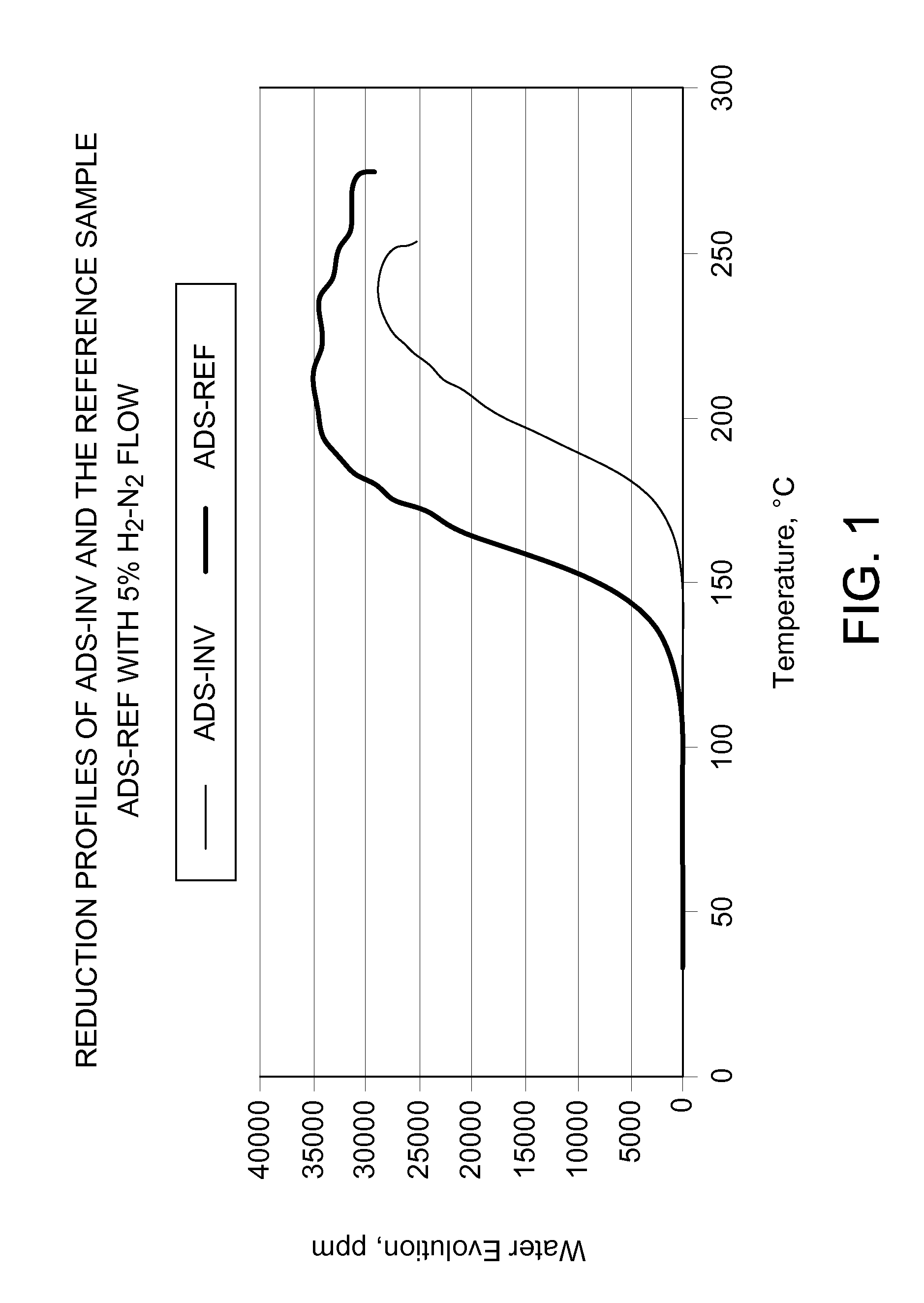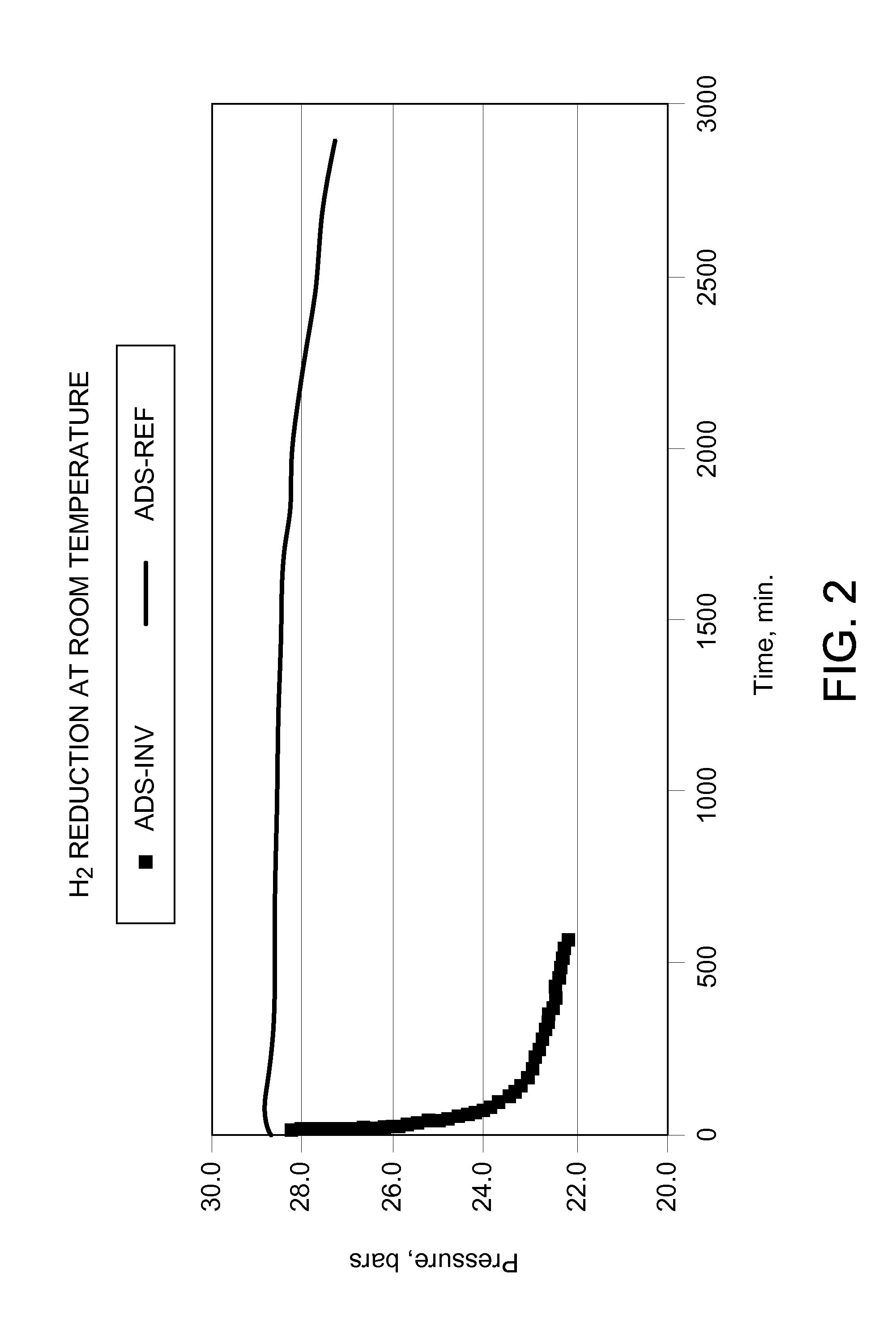Synthesis gas purification by selective copper adsorbents
a selective copper adsorbent and synthesis gas technology, applied in the direction of hydrogen separation using solid contact, dispersed particle separation, separation process, etc., can solve the problem of reducing the oxide to the copper metal which is less suited for contaminant removal, runaway reaction, and other safety concerns in the process, so as to increase the resistance of cuo against reduction by the synthesis gas componen
- Summary
- Abstract
- Description
- Claims
- Application Information
AI Technical Summary
Benefits of technology
Problems solved by technology
Method used
Image
Examples
example 1
[0030]Thermodynamic data summarized in Table 4 show that the logarithm of the equilibrium constant of the S removal process is several orders of magnitude higher when the Cu component does not convert by reduction to Cu metal. This makes possible the achievement of very low residual S in the product with the reduction resistant adsorbents of this invention.
TABLE 4Equilibrium Constant LogKTemp, ° C.Reaction406080100120140CuO + H2S(g) = CuS +20.719.518.417.416.615.8H2O(g)Cu2O + H2S(g) = Cu2S +22.321.019.918.818.017.1H2O(g)Cu + H2S(g) = CuS + H2(g)3.783.433.122.852.612.392Cu + H2S(g) = Cu2S + H2(g)8.88.27.77.26.86.5
example 2
[0031]Comparison of the reduction with H2 in a flow reactor of a prior art adsorbent and the adsorbent according the present invention. About 30 g adsorbent is heated with 5% H2-N2 gas mixture in a temperature programmed mode −2° C. / minute whereas the moisture content in the effluent is measured by a FTIR gas analyzer. The adsorbent of the invention (ADS-INV) reduces at higher temperatures than the reference adsorbent (ADS-REF) which does not contain any chloride. The progress of the reduction is followed by the water content in the effluent.
example 3
[0032]About 20 g adsorbent pressurized with about 2758 kPa (400 psig) hydrogen in a 300 cc autoclave. The pressure drop at ambient temperature is due to the adsorption of the reduction product water on the high surface area support. The picture shows that practically no pressure drop is observed with the material according to the invention ADS-INV while fast pressure drop is observed with the prior art material ADS-REF.
PUM
| Property | Measurement | Unit |
|---|---|---|
| Temperature | aaaaa | aaaaa |
| Angle | aaaaa | aaaaa |
| Temperature | aaaaa | aaaaa |
Abstract
Description
Claims
Application Information
 Login to View More
Login to View More - R&D
- Intellectual Property
- Life Sciences
- Materials
- Tech Scout
- Unparalleled Data Quality
- Higher Quality Content
- 60% Fewer Hallucinations
Browse by: Latest US Patents, China's latest patents, Technical Efficacy Thesaurus, Application Domain, Technology Topic, Popular Technical Reports.
© 2025 PatSnap. All rights reserved.Legal|Privacy policy|Modern Slavery Act Transparency Statement|Sitemap|About US| Contact US: help@patsnap.com


